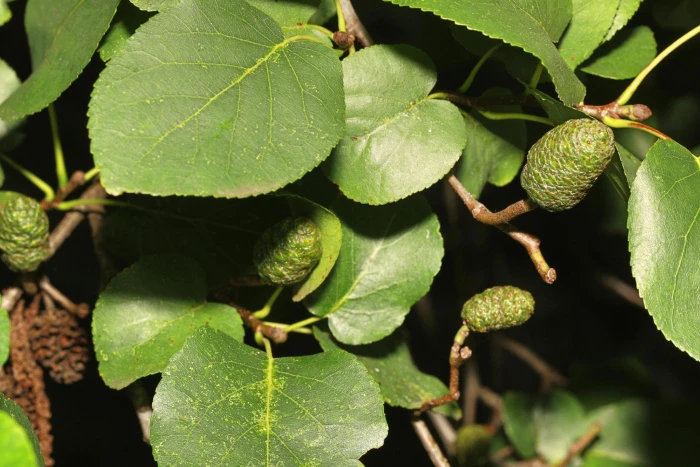Italian Alder
(Alnus cordata)
Italian Alder (Alnus cordata)
/
/

Stephen James McWilliam
Public Domain
Image By:
Stephen James McWilliam
Recorded By:
Copyright:
Public Domain
Copyright Notice:
Photo by: Stephen James McWilliam | License Type: Public Domain | License URL: http://creativecommons.org/publicdomain/zero/1.0/ | Rights Holder: Stephen James McWilliam | Publisher: iNaturalist | Date Created: 2019-08-27T15:49:49-07:00 |














































Estimated Native Range
Climate Requirements for Sugar Land, Texas
| This Plant | Your Site | Plant Suitability for Your Location | ||
|---|---|---|---|---|
| • Precipitation | 4" - 95" | 45" | Aquatic | Aquatic |
| • High Temp. | 60°F - 94°F | 94°F | Your summers may be too hot for this plant. | Too hot |
| • Low Temp. | 12°F - 53°F | 42°F | Your winter temperatures are normal for this plant | Excellent |
This plant may not grow well at your location - your precipitation is too high.
Summary
Alnus cordata, commonly known as Italian Alder, is a deciduous tree native to the sunny, well-drained slopes and riverbanks of Corsica and Italy. It can reach up to 25 meters (80 feet) in height, with a trunk diameter of 70–100 centimeters (30–40 inches). The Italian Alder has a long season in leaf, typically from April to December in the Northern Hemisphere, and features heart-shaped, glossy green leaves. Its flowers are catkins, with the males being yellow and pendulous and the females green and upright, maturing into small, woody cones. Italian Alder is particularly noted for its ability to improve soil fertility through symbiotic nitrogen fixation with Frankia alni bacteria.
This species is valued for its rapid growth and adaptability to dry soils, making it an excellent choice for reclamation sites, urban environments, and as a windbreak. It is also appreciated for its ornamental qualities, including its attractive foliage and catkins. Italian Alder requires full sun to part shade, tolerates a range of soil types, and is generally low-maintenance once established. However, it can be potentially invasive outside its native range, so gardeners should consult local guidelines before planting. Alnus cordata has been recognized with The Royal Horticultural Society’s Award of Garden Merit for its qualities in cultivation.CC BY-SA 4.0
This species is valued for its rapid growth and adaptability to dry soils, making it an excellent choice for reclamation sites, urban environments, and as a windbreak. It is also appreciated for its ornamental qualities, including its attractive foliage and catkins. Italian Alder requires full sun to part shade, tolerates a range of soil types, and is generally low-maintenance once established. However, it can be potentially invasive outside its native range, so gardeners should consult local guidelines before planting. Alnus cordata has been recognized with The Royal Horticultural Society’s Award of Garden Merit for its qualities in cultivation.CC BY-SA 4.0
Plant Description
- Plant Type: Tree
- Height: 30-50 feet
- Width: 20-30 feet
- Growth Rate: Rapid
- Flower Color: N/A
- Flowering Season: Spring
- Leaf Retention: Deciduous
Growth Requirements
- Sun: Full Sun, Part Shade
- Water: Medium, High
- Drainage: Slow, Medium
Common Uses
Bee Garden, Bird Garden, Butterfly Garden, Low Maintenance, Street Planting, Water Garden
Natural Habitat
Sunny, well-drained slopes and riverbanks in Corsica and Italy
Other Names
Common Names: Ontano Napoletano, Hartbladige Els, Italiensk Al
Scientific Names: Alnus cordata, Alnus cordifolia, Alnus cordata subsp. cordata, Alnus cordata var. rotundifolia, Alnus obcordata, Alnus cordata f. parvifolia, Alnus cordifolia var. rotundifolia, Alnus neapolitana, Alnus nervosus
GBIF Accepted Name: Alnus cordata (Loisel.) Duby